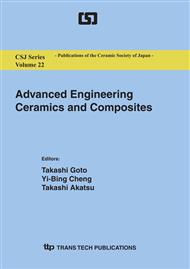p.172
p.177
p.183
p.188
p.192
p.204
p.210
p.222
p.226
Microelectronics Package Design Using Experimentally-Validated Modeling and Simulation
Abstract:
Packaging high power radio frequency integrated circuits (RFICs) in low temperature cofired ceramic (LTCC) presents many challenges. Within the constraints of LTCC fabrication, the design must provide the usual electrical isolation and interconnections required to package the IC, with additional consideration given to RF isolation and thermal management. While iterative design and prototyping is an option for developing RFIC packaging, it would be expensive and most likely unsuccessful due to the complexity of the problem. To facilitate and optimize package design, thermal and mechanical simulations were used to understand and control the critical parameters in LTCC package design. The models were validated through comparisons to experimental results. This paper summarizes an experimentally-validated modeling approach to RFIC package design, and presents some results and key findings.
Info:
Periodical:
Pages:
192-203
Citation:
Online since:
July 2011
Authors:
Keywords:
Price:
Сopyright:
© 2011 Trans Tech Publications Ltd. All Rights Reserved
Share:
Citation:


